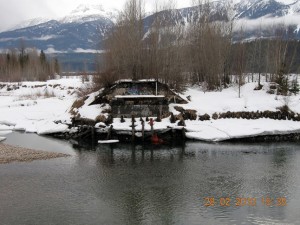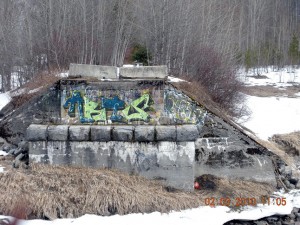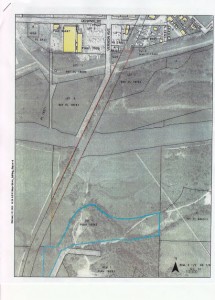
By David F. Rooney
A pedestrian bridge across the Illecillewaet has been under discussion for years and lately some have wondered whether it was still in the works or if it had quietly been deep-sixed. Now Community Economic Development Director Alan Mason says it’s not only still alive but could be built next year.
He told the board of the Illecillewaet Greenbelt Society (IGS) that a variety of holdups, including the question of who actually owned the old rail bed, have held up the project, which was originally proposed four or five years ago. The IGS has a direct interest in the bridge and its design because the pedestrian bridge would be located in the Greenbelt and would link different trails.
“It took us an amazing amount of time to find out that the old rail bed (which was

commissioned in the 1960s) had reverted to the Crown,” he told the IGS directors over lunch at Bad Paul’s on Tuesday.
“The Crown advised us to purchase it for a dollar so we applied for that but the Crown came back and said told us there were too many First Nations objections to that so they suggested we apply for a long-term lease. The City has now done that.”
Then there were the old stone and concrete abutments of the original CPR bridge across the river. A number of engineers told Mason they should still be usable, “but none of them would sign off on that.”
Subsequent investigation of the actual state of the abutments could only be performed during “a small window of time” in the autumn after water levels had dropped and that showed “they’re pretty shaky.”
“We’re not going to touch the old ones,” Mason said. “The new ones will go in behind them and will be a little higher.”
Then there was the question of what kind of bridge to build. Mason looked at suspension and truss and girder bridges make of a variety of materials. Department of Public Works officials suggested a metal bridge would be less likely to be subjected to severe vandalism, such as burning. An all-metal bridge would also be cheaper than a wooden one, which could cost as much as $1.5 million. He also said the City has a preliminary design for a bridge that will hearken back to the original CPR bridge design.

Director Chris Johnston told Mason he thought a bridge that had a metal structure but a wooden superstructure might be more in keeping with what the society hopes to see built. The rest of the board agreed with that suggestion.
Development of the bridge could happen fairly quickly, perhaps as early as 2011.

“We’re just on the verge of putting out the tenders for the new abutments,” Mason said, adding that besides a $100,000 commitment from the Kingsbury Foundation, the City has also received $100,000 from the Columbia Basin Trust for the pedestrian bridge project. Access to the abutments by construction crews could be achieved using the grassed-over Vernon Avenue extension that runs from the end of Vernon to the abutments alongside the defunct rail bed.
The trails it will connect will be unpaved. And while there have been some suggestions that the bridge could be used by ambulances as an alternate route to the Queen Victoria Hospital, the board is not keen on that.
Click here to read a 2008 report about the project.
Click here to see a set of schematics for the proposed bridge.



